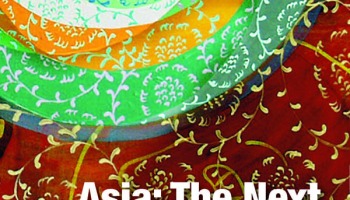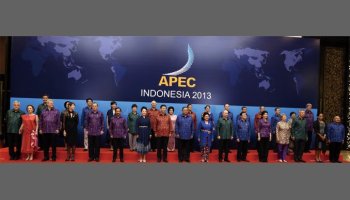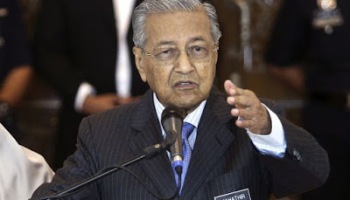
 Economic solidarity: Asia-Pacific leaders attending the fourth RCEP meeting as part of the 37th Asean Summit in Hanoi, Vietnam, last week. — Reuters
Economic solidarity: Asia-Pacific leaders attending the fourth RCEP meeting as part of the 37th Asean Summit in Hanoi, Vietnam, last week. — Reuters
Malaysia and other partner nations are looking forward to better days ahead after signing the world’s largest trade deal.
THE Regional Comprehensive Economic Partnership (RCEP), eagerly awaited by 15 member nations and their 2.2 billion people, was finally signed last Sunday after eight years of negotiations and delays.
This regional free trade agreement has injected hope into the economies of member nations as they struggle to contain the second wave of Covid-19 pandemic.
The biggest trade deal in the world signed on Nov 15 during a virtual summit in Vietnam will, among others, allow participating countries to enjoy major tariff cuts.
Covering 30% of the global economy and global population, the RCEP will broaden and deepen economic linkages across the Asia Pacific region, ease trade in goods and services and facilitate the flow of investments.
The Geneva-based United Nations Conference on Trade and Development (Unctad) believes that the RCEP could give “a significant boost” to foreign direct investment (FDI) in the region.
“The provisions related to market access and disciplines in trade, services and e-commerce are highly relevant for regional value chains and market-seeking investment,” said the UN body in its special issue on investment trends last Sunday.
With China being a participating nation, others within the bloc will be able to gain easier access to China’s vast market of
1.4 billion people, including its 400-million strong middle-class income group.
And China, being the largest economy in Asia, will find it easier to export its capital to Asean and other RCEP nations after having faced political barriers in its investments in the West in recent years.
The RCEP comprises 10 Asean members (Indonesia, Malaysia, Singapore, Brunei, Vietnam, Laos, Cambodia, Myanmar, the Philippines and Thailand) and five others in the region – Australia, China, Japan, South Korea and New Zealand.
Indeed, Singaporean Prime Minister Lee Hsien Loong’s remark after the signing could best summarise the importance and impact of the trade agreement.
He described the signing of the RCEP as a “major step forward for the world at a time when multilateralism is losing ground and global growth is slowing”, according to The Straits Times.
“It signals our collective commitment to maintaining open and connected supply chains, and to promoting freer trade and closer interdependence, especially in the face of Covid-19 when countries are turning inwards and are under protectionist pressures,” he added at the virtual conference hosted by Vietnam.
Premier Li Keqiang of China, which has been suffering from the US-led trade war, said the RCEP “is a victory of multilateralism and free trade” and “it let people choose unity and cooperation in the face of challenges, rather than conflict and confrontation.”
In its analysis, Global Times said: “The conclusion of the RCEP indicates that most Asian countries endorse free trade framework and see it as a landmark step toward achieving closer economic integration in East Asia and South-East Asia.
“The RCEP sends out the message that Asian countries are not willing to blindly follow the US and exclude China from the region’s integration process. A sound and healthy economic community in Asia cannot be achieved without China’s participation.”
For China, the RCEP is the first multilateral free trade agreement it has ever participated in. China already has bilateral trade deals with many RCEP members, and it has been trying to seal an obstacle-filled trilateral pact with Japan and South Korea.
For Malaysia, the cheer is that the RCEP will provide greater access to regional markets and more opportunities for local small and medium-sized enterprises (SMEs) to expand into foreign markets, said Senior Minister Datuk Seri Azmin Ali.
The lowering of barriers and streamlining of rules in trade facilitation will boost Malaysia’s trade with RCEP countries and attract foreign firms keen on entering into a more integrated Asean, said the Associated Chinese Chamber of Commerce and Industry of Malaysia (ACCCIM).
“This will enhance transparency in trade and investment, as well as facilitate the greater inclusion of Asean’s SMEs in global and regional supply chains,” said ACCCIM president Tan Sri Ter Leong Yap in a statement.
Wanita MCA national chairperson Datuk Heng Seai Kie said the RCEP provides “new hope for Malaysian entrepreneurs and national economic recovery to counter the current pandemic”.
“The RCEP trade deal will help stimulate the economy by integrating the various participating nations in the Asia-Pacific while introducing lowered tariffs, standardised customs rules and procedures and widened market access, especially among countries that don’t have trade deals,” she said in a statement.
Describing the free trade agreement as “an incredibly important agreement in terms of the timing”, Australian Trade Minister Simon Birmingham said: “This agreement signifies that our region is still committed to openness and to trade and that we will use that as a platform and a springboard for recovery in the post-Covid era… Better access for our farmers and businesses means more jobs for Australians overall.”
Birmingham noted that Australian businesses in education, healthcare, accountancy, engineering and legal service industries would benefit most from the deal, which will allow them to open offices in RCEP countries.
Most importantly, the trade pact may facilitate Australia’s exports to China – its largest trading partner – if Australia tones down its two-year long hostility towards Beijing. Canberra’s ongoing spat with Beijing has hurt Australia’s economy deeply.
For Japanese exporters, the agreement means that China and South Korea will gradually eliminate tariffs on sake and shochu, according to Japan Times. The reduction from China’s current 40% tariff on both will fall to zero after 21 years, and South Korea’s 15% tariff on both goods now will be eliminated after 15 years.
The RCEP may help reduce the adverse impact of trade wars waged on any member country in the deal, according to prominent YouTuber Yang Fong.
“Once the RCEP comes into force in two years, the US cannot simply wage trade wars on China and other members. The deal will also bring major changes to supply-chains in China and the region,” said the economic analyst.
While all member nations are excited about RCEP, India left the negotiation table last year.
In November 2019, Prime Minister Narendra Modi said the pact would not benefit India’s core interest. Indian dairy farmers, as well as SMEs, are worried of losing out to China in the trade of manufactured goods, and to Australia and New Zealand on dairy products.
But despite this, the RCEP welcomes the return of India once it is ready to join.
To the Western world, the concern is that the world’s largest trade deal has left out the United States.
“Notably, the agreement excludes the US and can potentially allow China to cement its position as a key trade partner for South-East Asia and other countries,” CNBC said in its report.
The US Chamber of Commerce in Washington has expressed concern that the US is being left behind in the world’s largest free-trade bloc, reported Reuters.
However, the absence of US in the RECP could be easily explained. The world’s biggest economy was never a part of the trade pact from the very beginning.
The RCEP’s formation in 2012 is seen as an Asean response to the Trans-Pacific Partnership (TPP), a US-led free trade agreement that excluded China – the world’s second largest economy and largest trading partner for most Asian countries.
At the beginning, TPP membership included the United States, Malaysia and several Asean countries, Japan, South Korea, Canada, Mexico and Australia.
While setting up the RCEP, Asean invited China, India, Japan, South Korea, Australia and New Zealand to be partners in this free trade agreement.
For countries like Malaysia that believe in multi-lateralism, they can gain tremendously from having membership in both US-led TPP and Asean-led RCEP.
However, when Donald Trump became president, he rejected multilateralism and the Trump administration withdrew from the TPP in 2016.
Trump’s “America First” policy and the trade wars he has waged against China and others have also raised doubts about the US’ willingness to trade with Asian countries on mutually beneficial basis.
Without US participation, the West is worried that China will dominate RCEP and expand its influence in the region.
China’s state-linked Global Times is prompt to supply answers and address the concern.
Noting that major US allies (such as Australia, New Zealand and Japan) are part of the RCEP, Global Times said: “China cannot dominate the attitude of these countries or Asean as many major US allies are in the deal.”
In fact, Japan and Australia – which have enjoyed very close ties with the US – are likely to keep a close eye on China in the RCEP, while championing their own interests in the deal.
Global Times added: “If China is the so-called winner this time, then it is a win-win situation for all other RCEP members because these countries have strived for their own benefits during the past eight years of negotiations. All countries can only be winners since they have signed this agreement.”
Analysis by HO WAH FOON wahfoonho@thestar.com.my
Related posts:




































